When you purchase through links on our site, we may earn an affiliate commission. This doesn’t affect our editorial independence.
The next decade will see ground-breaking technological developments in several sectors, with the potential to transform industries. Companies and research firms are rolling out innovations expected to foster change to our daily lives, and usher in a new era of unimaginable possibilities.
The imminent technological revolution will encompass fields such as biotechnology, renewable energy, artificial intelligence, and space exploration. In this article, we will examine the most fascinating patents that have the potential to completely change how we live and work.
1. Mind-Controlled Devices
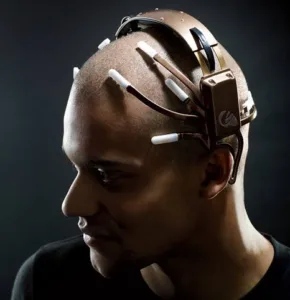
Credit: Wondergressive
Neuralink and Meta and a few other companies have submitted patent applications for their Brain-Computer Interface (BCI) technology. It has the potential to revolutionize communication, gaming, and medicinal treatments. The device can decode brain impulses so that users can text, control things, or even converse discreetly. For instance, electrodes have been implanted in the brains of people with epilepsy to better record and possibly forecast neurological mishap that causes seizures.
There have also been successful trials for deep-brain stimulation. It involves using implanted devices to stimulate important brain areas. This is a proven remedy for Parkinson’s disease and could one day be used to treat depression. However, the idea of getting one’s skull drilled and medics inserting chips into your brain is probably not going to be appealing in real life.
2. Self-Healing Materials
Scientists are creating materials that can mend themselves when they are broken. This has a potential to cut waste and increase product longevity. Patents in this field include self-repairing phone screens that patch cracks on their own and self-healing concrete for infrastructure. These advancements might result in devices, structures, and even spacecraft with longer lifespans.
Research in this field has attracted a lot of interest lately due to the potential of SHMs. It can transform several sectors by improving the robustness, dependability, and safety of structural components.
3. Flying Cars: Vertical Take-off and Landing (VTOL)
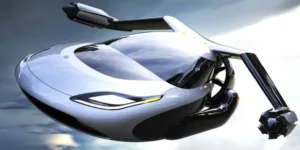
Credit: Future of Flight
Since the early 1900s, aerial cars have been a common feature of science fiction and fantasy literature. It now seem like they might soon become a reality. Aerospace engineer at Missouri University of Science and Technology in Rolla aerospace Xiaosong Du says the technology to create flying cars is currently in existence. The potential to transform urban mobility is seen in a number of patented ideas for air taxis and vertical take-off and landing (VTOL) vehicles from firms like Uber and Hyundai. Reduced traffic, shorter commutes, and new opportunities for transportation infrastructure are among our expectations in all of these developments.
Unfortunately, the expense is one of the biggest barriers to people using flying cars for mobility. Later this year, the flying cars are anticipated to go into production, and rumored to come with a price tag of about $500,000.
4. Quantum Computing
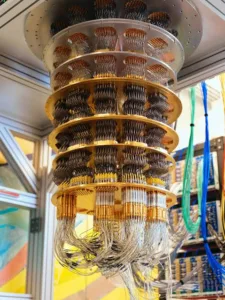
Credit: Quantum Potential
There are several problems that classical computers cannot solve that can be solved by quantum computers. There are patents by tech giants like Google, Microsoft and IBM, of new quantum computing techniques that boost processing power. If any of these becomes applicable in the world, it could fundamentally alter industries like medicine, artificial intelligence and cryptocurrency. Classical computers use bits while quantum computers use quantum bits, or qubits. Qubits are capable of existing in numerous states simultaneously, based on quantum mechanics. Quantum computers work on the principle of quantum mechanics to perform incredibly complex computations at incredibly high speeds.
5. 3D-Printed Organs
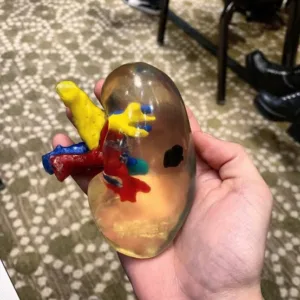
Credit: MXTX
The area of regenerative medicine is developing rapidly with patents for 3D-printed organs and tissues that may dispense with the need for organ donors. Researchers are developing bio-printed kidneys, skin transplants, and hearts that could one day save millions of lives.
In 2023, Dr. Arturo Bonilla of Texas expertly placed an outer ear in a 20-year-old lady who was born without one. The woman’s right ear was 3D printed using cells from her own body to match the dimensions and form of her left ear.
6. Space-Mining Technologies

As space exploration keeps advancing, the idea of mining asteroids for rare minerals is also growing. Patents for techniques to mine asteroids for metals, water, and other minerals have been filed. NASA and Planetary Commodities are confirmed patent holders in this field. Their innovations could support deep space travel and the growing space economy.
However, the laws governing this terrain are vague and poorly defined. Issues about ownership of lunar territory and rights to extract resources are still unresolved. There is a necessity for globally accepted regulations governing space exploration as big tech companies like SpaceX and Blue-Origin are now pioneering a new age of space exploration.
7. AI-Powered Lawyers
The Legal sector has seen patents on AI-powered legal assistants that can prepare contracts, analyze case law, and forecast legal outcomes. Although complex cases still need human intervention, these tools could expedite legal work and increase the efficiency of law firms.
It is certain that these technologies will help attorneys save time. This will enable them focus more on the critical task of client advice. For example, Spellbook‘s AI-powered tools can be used to speed up contract creation and review. Attorneys can by using it significantly reduce the amount of time they spend on repetitive legal work.
8. Energy Harvesting from Human Movement
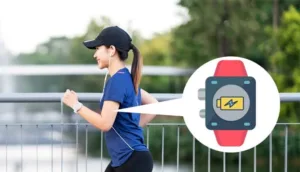
Credit: Wellness Photos
It won’t be long until we can power our gadgets only by moving or walking. This field has seen a surge in interest as a potential energy source. Patents on wearable energy-harvesting technology explore methods of turning blood flow, movement, or body heat into useful electricity. This might result in medical devices, fitness monitors, and smartwatches that run without an external power source.
Energy harvesting devices are a very appealing alternative to battery-powered devices. These devices can harvest energy from both human and mechanical movements. Several motion-powered devices have been proposed and are currently being developed.
9. Smart Contact Lenses
Smartwatches are not the only wearable technology of the future. Companies like Google and Samsung have patented contact lenses with built-in cameras, glucose monitoring for diabetics, and Augmented Reality (AR) features. These glasses may redefine our interactions with digital information and healthcare monitoring. Video calls could soon give way to full-fledged holographic interactions.
10. Holographic Communication

Credit: Asian Mag
There are several patents for devices that project 3D holograms in real-time and let users interact as though they were in the same room. This has the potential to transform virtual interactions, entertainment, and remote work.
Final Notes
The world of patents can offer a fascinating preview of upcoming advancements. Even though some of these cutting-edge technologies are still in the early stages of development, they show how much room there is for innovation across many industries. Undoubtedly, these concepts will influence the future in ways we can’t even begin to envision as they go from patent applications to practical uses.
Check Out Our Previous Posts:
Top 5 Smart Farming Technologies Revolutionizing Agriculture
Futuristic Technology Promised by Elon Musk: Neuralink and Self-driving Cars







